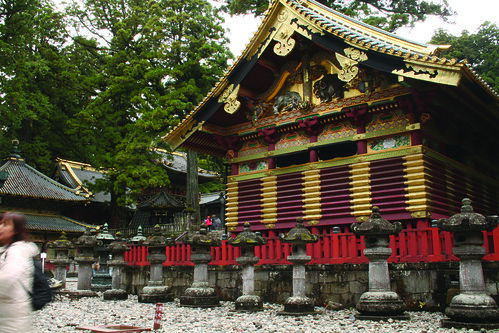Columnist Jimmy Viola immersed himself in Tokyo culture after an appearance on a variety show.

As a broadcast journalism major, I never thought my first appearance on national television would be on the dating segment of a Japanese variety show – but I enjoy surprises.
Japanese production assistants and stagehands hurried backstage, whispering instructions to me in broken English. Only a thin sheet of Japanese wax paper — I was instructed to break through it on cue to make my grand entrance — separated me from a slew of television personalities, live cameras and the potential for either awesomeness or disaster on live television.
I would be appearing as a sort of costumed alter-ego, imagine if Ziggy Stardust had a gay lovechild with the villains from The Road Warrior. Still, a part of my conscience whispered that I would be making a spectacle of myself, my country and everything I believed in.
The producer signaled to me that I was to break through the paper door in three seconds.
I exhaled and remembered my four years of taekwondo as I crashed through the paper sheet with a jumping double front kick.
“Good evening, Japan. My name is Jimmy,” I said in Japanese, eliciting laughter from my mispronounced words. “My super foreigner sexy power is awesome, I tell you.”
Five minutes later, my breakout appearance on Japanese television had passed in an adrenalized blur. I wondered if I had imagined it all on a train heading away from Tokyo, with crimson leaves and square fields of rice against the misty hills passing by the window.
The train rolled toward Nikko, a hot spring resort town in the mountains.
Nikko houses one of Japan’s most elaborately styled Shinto landmarks, the Nikko Tosho-gu shrine, which houses the remains of the founder of the Tokugawa Shogunate. Its flamboyant architecture is so detailed almost every inch of the shrine could be disassembled and displayed separately at an art museum.
The walls of the shrine’s main gate are sculpted into mounted sculptures of wood-carved pine needles. Another famed piece of artwork near barrels of aged sake shows the caricatures of monkeys demonstrating the Chinese proverb to do no evil by covering their eyes, ears and mouths. Live monkeys inhabit the region of Nikko as well, but disappointingly, the caricatures would be the only monkeys I would see on my trip.
Another daytrip worth taking in Japan during the fall season is to the Chichibu Tama Kai National park, two hours outside of Tokyo near the neighboring Saitama prefecture. The portion of the trail I visited winded through the Asian pine and Gingko covered mountains. Buddhist statues along the path were the only company I came across for miles at a time.
Jimmy Viola can be reached at jimmy.viola@temple.edu.



Be the first to comment